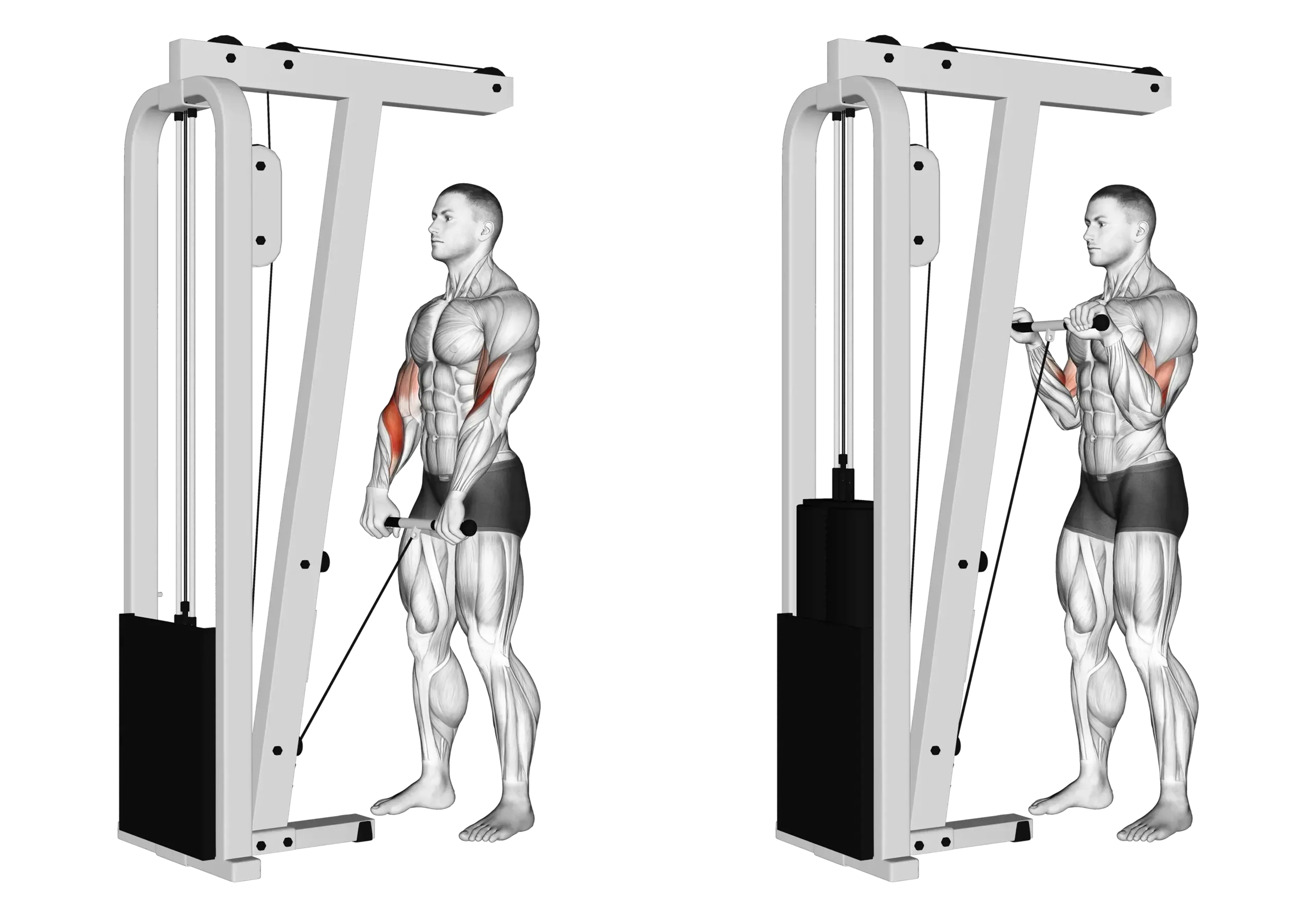Cable Curl (Reverse Grip)

Overview
- Primary Focus:
- Biceps.
- Equipment:
- Cable.
- Difficulty:
- Beginner.
General Information
The Cable Reverse Grip Curl is an isolation exercise that primarily targets the brachialis and brachioradialis, with secondary emphasis on the biceps brachii and wrist extensors. It is a beginner-friendly movement that is easy to learn and highly effective when performed with proper form.
The reverse (overhand) grip shifts emphasis away from the biceps long head and toward the brachialis and forearm muscles. This makes it a great complementary exercise to standard underhand curls, helping you build more balanced arm development.
Using a cable machine provides consistent tension throughout the range of motion, which helps minimize momentum and increases time under tension—both of which are beneficial for hypertrophy and strength gains.
Muscles Worked
- Brachioradialis
- Primary
- Brachialis
- High
- Biceps Brachii
- Medium
- Extensor Carpi Radialis
- Medium
Instructions
- Attach a straight or EZ bar to a low pulley cable machine.
- Stand upright and grasp the bar with an overhand grip (palms facing down), hands shoulder-width apart.
- Keep your elbows tucked close to your body and arms fully extended.
- Curl the bar toward your shoulders by contracting your biceps and forearms, keeping your wrists straight.
- Pause briefly at the top of the movement for a strong contraction.
- Slowly lower the bar back to the starting position with control.
- Repeat for the desired number of repetitions.
Common Mistakes
Injuries
Cable Reverse Grip Curl is a low to medium risk exercise when performed correctly.
The most common issues involve wrist or forearm strain, especially for individuals with limited wrist mobility or poor grip strength. Using a straight bar may increase discomfort—consider an EZ bar attachment to ease joint stress.
To reduce injury risk, avoid using excessive weight that could force you to compromise form or engage the shoulders. Maintain proper wrist alignment and always warm up your forearms and biceps before the working sets.
Including forearm stretches or mobility drills in your routine may also help prevent repetitive strain injuries when frequently performing reverse grip exercises.
Alternative Exercises

Frequently Asked Questions
- Q: Can I use an EZ bar attachment instead of a straight bar?
Yes, an EZ bar can be easier on the wrists while still effectively working the target muscles.
- Q: Is this exercise good for fixing weak forearms?
Yes, it targets the brachioradialis and wrist extensors, helping build forearm strength and size.
- Q: How heavy should I go on reverse curls?
Start with lighter weight to maintain strict form, especially if you're not used to the overhand grip.
Overview
- Primary Focus:
- Biceps.
- Equipment:
- Cable.
- Difficulty:
- Beginner.




